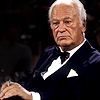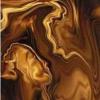I'm going through my old posters with a view to framing some of them and I came across an oddity. It's a poster for "The Spy Who Loved Me," but I can't remember where I got it; possibly an online purchase years ago in the early days of eBay. Or maybe it was a gift, I really can't recall.
Anyway, the point is I can't tell if it's an original or a repro. I have a TSWLM poster that I know is original, but it's a typical poster of the era in that it's printed on a fairly heavy stock paper with a glossy finish, and it's folded. I have posters for LALD and AVTAK that are very much the same. However, this "mystery" version is rolled, and on a much lighter weight paper -- almost the weight of standard typing paper -- with more of a matte finish.
I have a repro version that I snagged for a pittance years ago, but even that one is on heavier paper and it's no match for this "mystery" version: the linework on the mystery poster is crisp with bright, vivid colors, where the repro's linework is heavier and thicker with darker, murkier colors.
On the bottom of the mystery poster, in fine print, is the usual warning that the poster is intended only for display in an accredited theater and resale is forbidden. In the bottom right corner is the marking, "77/42" (just like my folded copy). The repro has neither of these markings, but in the lower left corner it has two copyrights: 1977, for the artwork, and 1997, which I assume is the date of the re-printing. The "credits" on the bottom of the mystery poster are printed in blue: on the known repro they're in black."
So what have I got? If this mystery poster is an original, why is it on such thin paper? Is this a "variant" format I hadn't heard of? It seems awfully fragile for theater use. Are the thicker, glossier posters an American thing and this thin one is from the UK or Canada? Having the original printing on the bottom doesn't necessarily rule out the possibility that this is a just a more "faithful" reprint than the other one, I'm guessing. (I just realized the audience rating -- "PG" or "A" or whatever -- would be a giveaway here, but I forgot to look, and now I'm at work).
I'd like to frame it either way as it looks great, but knowing whether it's vintage or a reprint will definitely affect how much I'm willing to spend on the process. If any of you experts could help me, it'd be wonderful.



